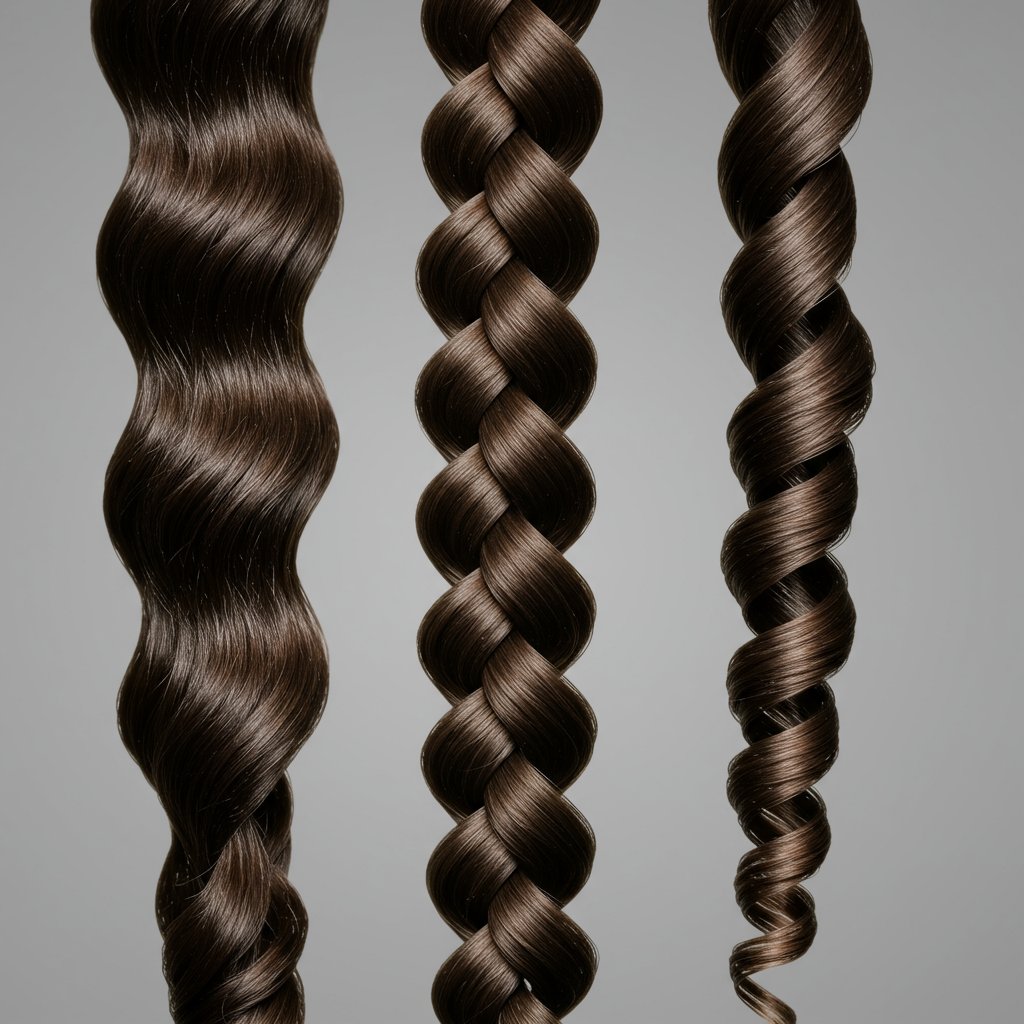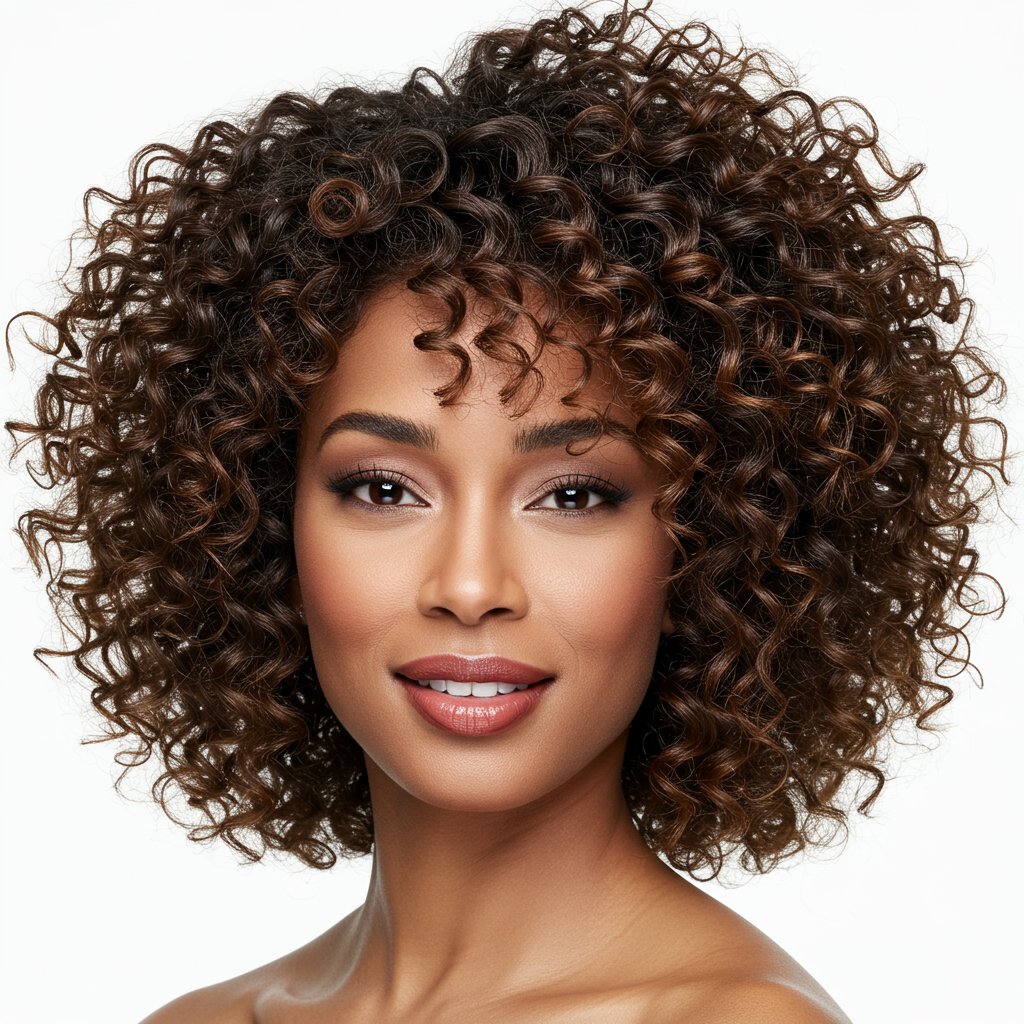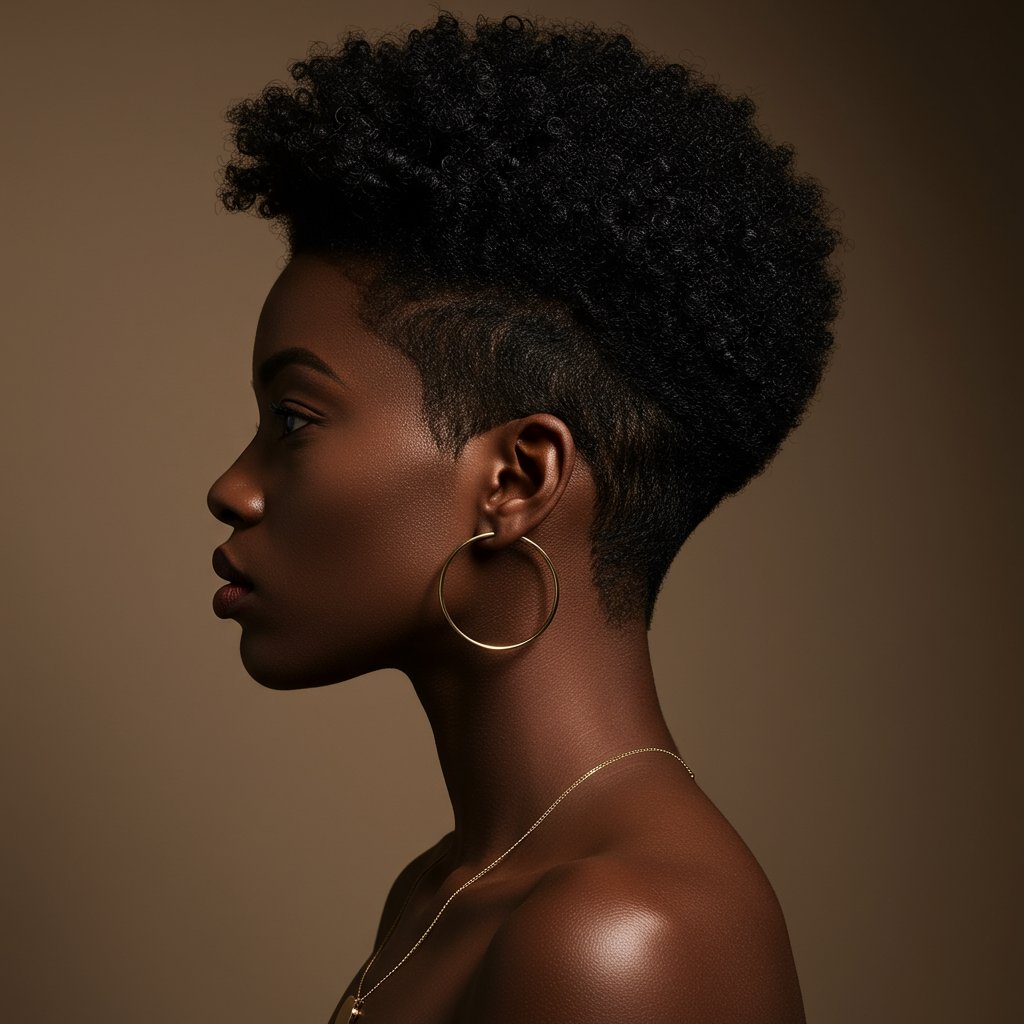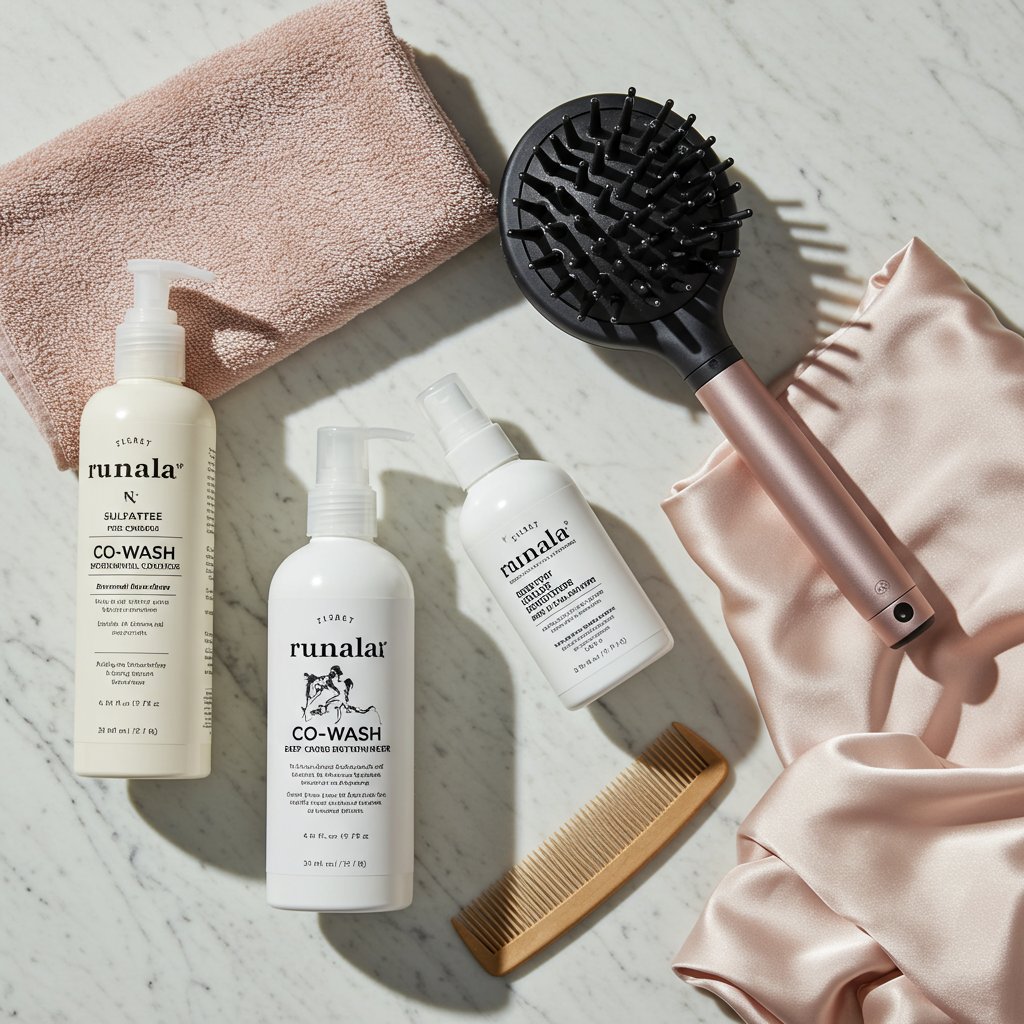The Best Haircuts for Enhancing Your Natural Texture | Embrace Your Waves, Curls & Coils
Embrace Your Unique Beauty: Why the Right Haircut Matters
For years, the standard of beauty often involved taming, straightening, and controlling natural hair texture. Thankfully, the tide has turned. Today, celebrating the unique waves, curls, and coils you were born with is not just a trend; it's a movement towards authenticity and self-love. The key to unlocking your hair's full potential lies in finding one of the best haircuts for enhancing your natural texture. A generic cut simply won't do. A precision haircut, designed specifically for your hair's pattern and density, can transform your daily routine from a battle into a beautiful, effortless expression of your personal style.

Choosing a haircut that works with your hair, not against it, is a game-changer. It means less time spent with heat tools, fewer frustrating styling sessions, and a healthier mane overall. The right shape can add volume where you need it, reduce bulk where you don't, and create a silhouette that frames your face beautifully. It allows your texture to shine, creating movement, definition, and a look that is uniquely yours. This comprehensive guide will walk you through the top haircuts for every texture, empowering you to have a more informed conversation with your stylist and fall in love with your natural hair all over again.
Understanding Your Hair Texture: The First Step
Before you can choose the perfect haircut, you must first understand your canvas: your hair's natural texture. Hair texture is generally categorized into types and subtypes, from straight (Type 1) to wavy (Type 2), curly (Type 3), and coily/kinky (Type 4). For the purpose of enhancing texture, we'll focus on Types 2, 3, and 4. Knowing your specific curl pattern—be it a loose S-wave, a tight corkscrew, or a Z-angled coil—is crucial. An experienced stylist will analyze not just your curl pattern but also your hair's density (how many strands you have), porosity (its ability to absorb moisture), and elasticity.

This initial analysis is the foundation of a great textured haircut. For example, fine, wavy hair might benefit from blunt lines to create an illusion of thickness, while dense, coily hair might require internal layering or 'channeling' to remove weight and allow the curls to move freely. Don't worry if you're unsure of your exact type. A professional consultation at a reputable hair salon will involve a thorough assessment. The stylist will observe your hair both dry and wet to understand its natural tendencies, shrinkage, and growth patterns. This detailed understanding ensures the final cut will look just as amazing when you style it at home as it does leaving the salon.
Best Haircuts for Wavy Hair (Type 2)
Wavy hair, the beautiful middle ground between straight and curly, possesses a natural 'S' shape that can range from loose and beachy to more defined and voluminous. The right haircut will prevent waves from being weighed down or appearing frizzy, instead encouraging their natural bend and movement.

The Modern Shag
The shag haircut has made a major comeback, and for good reason—it's practically designed for wavy hair. With its choppy layers, feathered ends, and face-framing fringe, the shag removes weight, which allows waves to spring up and achieve maximum volume and texture. It's an incredibly versatile and low-maintenance cut that looks effortlessly cool. Ask your stylist for longer layers if you want a softer look, or more dramatic, shorter layers for a rock-and-roll vibe. This cut works well on various lengths, from just above the shoulders to mid-back.The Effortless Lob (Long Bob)
A lob that ends somewhere between the chin and the collarbone is a chic and timeless option for wavy hair. To enhance texture, it’s best to avoid a single, blunt length. Instead, opt for subtle, 'invisible' layers throughout the interior of the hair. This technique removes bulk without creating a heavily layered look, allowing your waves to form without being disrupted. A slightly angled or A-line lob can also be very flattering, adding a modern edge while making fine wavy hair appear fuller.Long, Lived-in Layers
If you love your long hair, you don't have to sacrifice length to enhance your waves. Long, flowing layers are the perfect solution. The key is strategic placement. Layers that start around the chin and cascade down will create beautiful movement and prevent the dreaded 'triangle' shape that can happen when wavy hair is cut to one length. These layers encourage the wave pattern to form all the way up the hair shaft, not just at the ends, resulting in a full, bouncy, and romantic look.Best Haircuts for Curly Hair (Type 3)
Curly hair, with its distinct spiral or corkscrew shape, requires a haircut that understands its unique structure and tendency for shrinkage. The goal is to create a beautiful shape that prevents the curls from stacking on top of each other in a pyramid and instead allows each curl to live its best life.

The Bespoke Curly Cut (Dry Cutting)
Techniques like the DevaCut, RezoCut, or other forms of dry cutting are revolutionary for curly hair. Cutting the hair dry, in its natural state, allows the stylist to see exactly how each curl falls and clumps together. This method is essentially curl-by-curl sculpting. The stylist can shape the hair to enhance volume, create a flattering silhouette, and avoid any surprises with shrinkage. This is the gold standard for achieving a perfectly balanced and beautifully shaped haircut that complements your specific curl pattern, whether it's a 3A or a 3C.The Layered Bob
A bob can be absolutely stunning on curly hair. A chin-length or jaw-length bob with well-placed layers can create a fun, voluminous shape. For those with dense curls, internal or 'graduated' layers in the back can remove weight and create a lovely rounded shape, while longer pieces in the front frame the face. Adding a curly fringe or bangs can also add a fresh, modern touch, but be sure your stylist cuts them long enough to account for spring factor.The Curly Mullet or 'Shullet'
For the bold and fashion-forward, the modern mullet (or 'shullet'—a shag/mullet hybrid) is an incredible cut for curly hair. This style features shorter layers on top and around the face with longer length in the back. On curly hair, this creates an amazing cascade of texture and volume at the crown, while the longer pieces show off the beauty of the curl pattern. It’s an edgy, statement-making look that is surprisingly easy to style—simply enhance what's already there.Best Haircuts for Coily & Kinky Hair (Type 4)
Coily and kinky hair, with its tight, zig-zag, or S-shaped patterns, is the most delicate of the hair types. The best haircuts for coily hair focus on creating a beautiful shape, promoting health by removing dry ends, and working with significant shrinkage to achieve the desired look.

The Tapered Cut
A tapered cut is a fantastic and versatile option for Type 4 hair. This style is shorter on the sides and back (often clipper-cut or scissor-over-comb) and gradually gets longer towards the top. This technique directs all the volume and focus upwards, allowing you to showcase the beauty of your coils in a defined shape. It's a chic, low-maintenance style that can be worn as a short 'TWA' (Teeny Weeny Afro) or with more length on top for twist-outs, braid-outs, or wash-and-go styles.The Heart-Shaped or Rounded Afro
For those who love to wear their hair out and celebrate its natural volume, a professionally shaped Afro is a work of art. Instead of letting it grow without direction, a stylist can trim and shape it to flatter your face shape and bone structure. A heart-shaped or rounded silhouette is a classic, creating softness and a beautiful frame for the face. Regular trims are essential to maintain the shape and keep the ends healthy, preventing breakage and single-strand knots.Defined Layers for Length
If you have longer coily hair, you can still benefit from layers. A stylist who specializes in coily hair can use a 'dusting' technique or a dry cut to add subtle, long layers. This helps to create movement and a less bulky shape without sacrificing overall density or length. These layers can make styles like twist-outs and braid-outs have more dimension and prevent the hair from appearing heavy. The key is to ensure the layers are blended seamlessly to complement the coil pattern.The Consultation is Key: How to Talk to Your Stylist
The most important haircutting tool is communication. Finding a stylist who is not just skilled but also fluent in the language of textured hair is paramount. When you book your appointment, specifically ask for a stylist with a strong portfolio and experience with your hair type. During the consultation, be prepared. Bring inspiration photos of people with a similar hair texture to yours. Don't just show a picture; explain what you like about it—the shape, the volume, the fringe.

Be honest about your lifestyle and how much time you're willing to spend on your hair each day. A low-maintenance cut for one person might be high-maintenance for another. Discuss your hair history, your current product lineup, and your ultimate hair goals. A great stylist will listen, ask questions, and even offer a 'texture twin' from their client list to show you realistic results. They should be able to explain their cutting technique (wet vs. dry) and why it's the right choice for you. This collaborative conversation is what leads to a haircut you'll truly love.
Pro Tips for Maintaining Your Texture-Enhancing Haircut
Once you have the perfect cut, proper maintenance is crucial to keeping it looking its best. First, invest in high-quality, sulfate-free cleansers and conditioners formulated for your hair type. Moisture is king for all textures, so incorporate a weekly deep conditioning treatment or hair mask into your routine. When it comes to styling, learn techniques that enhance your pattern. For waves and curls, 'plopping' with a t-shirt or microfiber towel can reduce frizz and boost definition. A diffuser attachment on your blow dryer is essential for drying curls without disrupting their shape.

For coily textures, protective styling and the LOC (Leave-in, Oil, Cream) or LCO method can help seal in moisture and prevent breakage. To preserve your style overnight, sleep on a silk or satin pillowcase or wear your hair in a silk bonnet or scarf. This minimizes friction, which is a major cause of frizz and tangles. Finally, stick to a regular trim schedule. Textured hair should typically be trimmed every 3-4 months to remove split ends and maintain the shape of your cut, even if you're growing it out.
Frequently Asked Questions About Natural Texture Haircuts
How often should I get my textured hair cut?
This depends on your hair's health and the style you're maintaining. For shorter styles like a tapered cut, you may need a trim every 6-8 weeks. For longer styles, every 12-16 weeks is generally sufficient to remove split ends and reshape the cut.
Can I get a short haircut with curly or coily hair?
Absolutely! Short cuts like pixie cuts, bobs, and tapered styles can be incredibly chic and liberating on textured hair. The key is finding a stylist who understands how to work with shrinkage and create a shape that complements your face and curl pattern.What's the difference between a dry cut and a wet cut for textured hair?
Cutting hair wet is a traditional method where hair is cut to a uniform length. This can be problematic for textured hair because you can't see the true curl pattern or predict shrinkage. A dry cut allows the stylist to cut the hair in its natural, curly state, sculpting it curl by curl for a more accurate and flattering shape.Will layers make my wavy or curly hair look frizzy?
When done correctly by a skilled stylist, layers should do the opposite. They remove weight, which allows curls to spring up and form more defined, less frizzy clumps. Poorly executed layers or using a razor can, however, cause frizz. Always seek a professional experienced in cutting textured hair.How do I find a stylist who specializes in natural texture?
Look for salons that highlight textured hair on their websites and social media. Instagram is a great tool—search hashtags like #[YourCity]Curls or #[YourCity]NaturalHairStylist. Read reviews and look at their portfolio of work to see if they consistently produce beautiful results on hair like yours.Conclusion: Your Texture is Your Superpower
Choosing a haircut that enhances your natural texture is more than just a style choice; it's an act of embracing your authentic self. The perfect cut can liberate you from the daily struggle with your hair and empower you with confidence. By understanding your specific hair type, exploring the styles that best suit it, and finding a stylist who can bring your vision to life, you can unlock a world of beauty that is uniquely yours. Stop fighting your hair and start working with it. Your waves, curls, and coils are not a problem to be solved—they are a feature to be celebrated.


